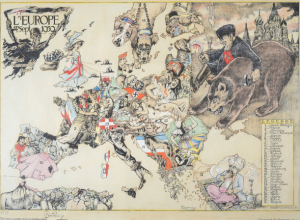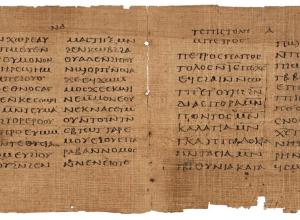A Chinese Encyclopedia, a Japanese Artist, and an American Collector
Sometimes a book is as much about its provenance as the item itself. For example, this eighteenth-century encyclopedia of China, finely illustrated by the Osaka artist Tachibana Morikuni owes much of its interest to the fact that it came from the collection of James E. Fagan.
Fagan (1926-2011) was an American collector with a special interest in the introduction of Western culture and technology to Japan's closed Edo-era society (1603-1868), also known as the Tokugawa period. He studied Japanese language and history at Stanford University, and served as a US Naval officer in the Pacific theatre. He then lived and worked in Japan as an attorney in the 1950s and 1960s.
During this time, Fagan assembled and researched his collection of rare Edo-era
woodblock and manuscript maps, prints and books not available outside Japan. Highlights include Nagasaki-e (showing the Japanese fascination with the Dutch East
Indies (VOC) outpost at Deshima island), early Rangaku examinations of Western
science and languages, the evolution of Japanese cartographic knowledge, and the
study of English and Russian military might and technology. Imaginative illustrations
and maps, from Japanese castaways reporting back to the Japanese Court, also provide a glimpse of how the Western world appeared to the first Japanese to circumnavigate the globe. The collection demonstrates Japan's keen curiosity about the Western world during its long isolationist period, and the artful way the Japanese perspective captures the impact of European contact.
Morokoshi kinmo zui, illustrated by Tachibana Morikuni and published in Japan in 1719, is a good example of Fagan's interests. It is an extensive encyclopedia on China, profusely illustrated with depictions of Chinese customs, astronomy, maps, landscapes, architecture, mythology, martial arts, weaponry, farming practices, flora & fauna. In fact, all that you would expect from an encyclopedia. In 15 volumes, it is printed from woodblocks, and comes with the original blue paper covers and title slips (under later yellow covers).
Tachibana Morikuni, from Osaka, was a leading eighteenth-century painter, illustrator, and writer, and he was a master of both Kano and Tosa styles. A student of
Tsuruzawa Tanzan, Morikuni lived and worked in Osaka. His major illustrated books
include Ehon Koji-dan (1714), Morokoshi Kimmo-zui (the work listed here)
(1719), Ehon shaho-bukuro (1720), Gaten tsuko (1727), Honcho gaen (1729), Utai
gashi (1732), Ehon oshukubai (1740) and Unpitsu soga (1749).
This work has recently been consigned to the Catawiki "Old & Rare" auction, and will be available for bids through approx. 8 p.m. (Central European Time) on Friday, July 13.















